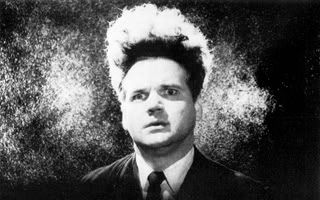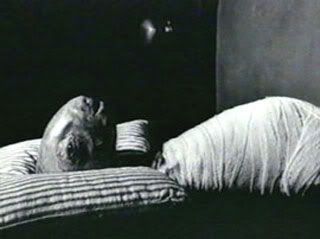
As much as I looked, there really is no official interpretation of David Lynch's "Eraserhead." And rightfully so. Lynch himself once stated that every interpretation he has heard hasn't even come close to the one he had in mind. As he does with the rest of his films, he refuses to shed any light on the meaning of the film which begs the question if there is any one at all. It was reported during the film's release back in 1977 that the film is Lynch's reaction to finding out he was to become a father. That sounds about right as the film deals a lot with oozing orifices, guttural noises, and some hideously deranged baby that can't even be considered human.
According to IMDb, how Lynch made the baby is still a mystery. Supposedly it was created from the embalmed fetus of a calf, but the director himself has never confirmed this. After filming, he buried the calf in an undisclosed location and even had a wake for it.

This baby that Henry is forced to watch over emits a grinding, wailing cry, an unbearable sound that drives his wife, Mary, insane. And it begins to drive us as viewers insane, too. Henry has an affair with a beautiful woman from across the hall, an affair that has them sinking into a pool of what could be bodily fluid. There's also the woman in the radiator who sings the haunting melody, "In heaven everything is fine." If in the radiator there's heaven, then the rusted, industrial, pipe-filled world in which Henry lives must be hell.
Void of dialogue for the first ten minutes and shot in a stark black and white, "Eraserhead" is full of moments and techniques that are echoed in his later films such as "Mulholland Drive" and, most notably, Lynch's 3-hour feature, "Inland Empire." It took him five years to write "Eraserhead," and he had a hard time receiving funding for the film because it contained a script of only 20 pages. And the parallels between his earliest and latest films are most prevalent because he began writing them at the same time.
The origin of Lynch's signature style is introduced with "Eraserhead," a style that would go on to permeate throughout the rest of his work much later. Trademark moves such as strange and symbolic characters, an eerie and subtle soundtrack, shocking and grotesque images, and humor that's as black as night are all present.

As much as the movie is indecipherable, I understand why it's revered as a classic in filmmaking. As a masterful array of textures, sounds, and images, it's a perfect nightmare. Uncomfortable to watch as it may be, there's no denying that this is a must-see for any person who has an interest in cinema. "Eraserhead" appears to be the purest and simplest (and most bizarre) of David Lynch we'll ever see, and it gives ideal insight into the mind of one the most eccentric and original directors of our time.





No comments:
Post a Comment